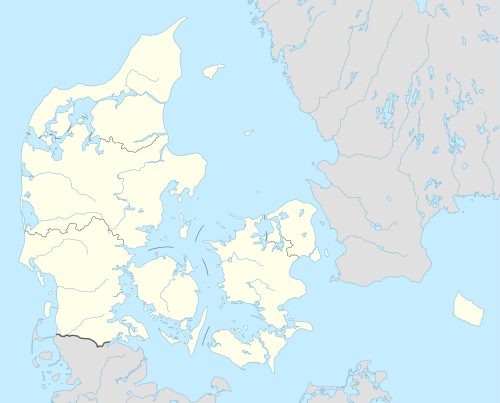Kong Svends Høj
|
Rear of Kong Svends Høj | |
 Shown within Denmark | |
| Location | Lolland, Denmark |
|---|---|
| Coordinates | 54°54′43″N 11°15′53″E / 54.91181°N 11.26485°E |
| Type | Passage grave |
| History | |
| Periods | Neolithic |
Kong Svends Høj (English: King Svend's Mound) is a passage grave on the island of Lolland in Denmark, immediately north of Pederstrup. The chamber in the mound is 12.5 meters long and it is one of Denmark's largest and most famous passage graves.[1]
Description
Kong Svends Høj consists of a large, rectangular mound covering a chamber 12.5 metres in length.[2] The mound is surrounded by kerbstones,[1] which, with a height of around 1.5 metres, are among the tallest recorded in a Neolithic tomb.[2] The gable stones are almost 4 metres high.[2] The north-western façade originally had two outliers, known as "horns" or guard stones.[3]
The first excavations were attempted in 1780 by a Danish prime minister and a pastor's son who later became bishop of Copenhagen.[1] The tomb was first restored in 1942, when the entrance was discovered.[1] The tomb is though to date to the middle Neolithic period, circa 3200 BC.[1]
References
- 1 2 3 4 5 Price, Theron Douglas (2015). Ancient Scandinavia: An Archaeological History from the First Humans to the Vikings. Oxford University Press. p. 147. ISBN 0190231971.
- 1 2 3 Scarre, Christopher; Laporte, Luc (2015). The Megalithic Architectures of Europe. Casemate. p. 65. ISBN 1785700170.
- ↑ Midgley, Magdalena (2008). The Megaliths of Northern Europe. Routledge. p. 55. ISBN 113426450X.
External links
![]() Media related to Kong Svends Høj at Wikimedia Commons
Media related to Kong Svends Høj at Wikimedia Commons